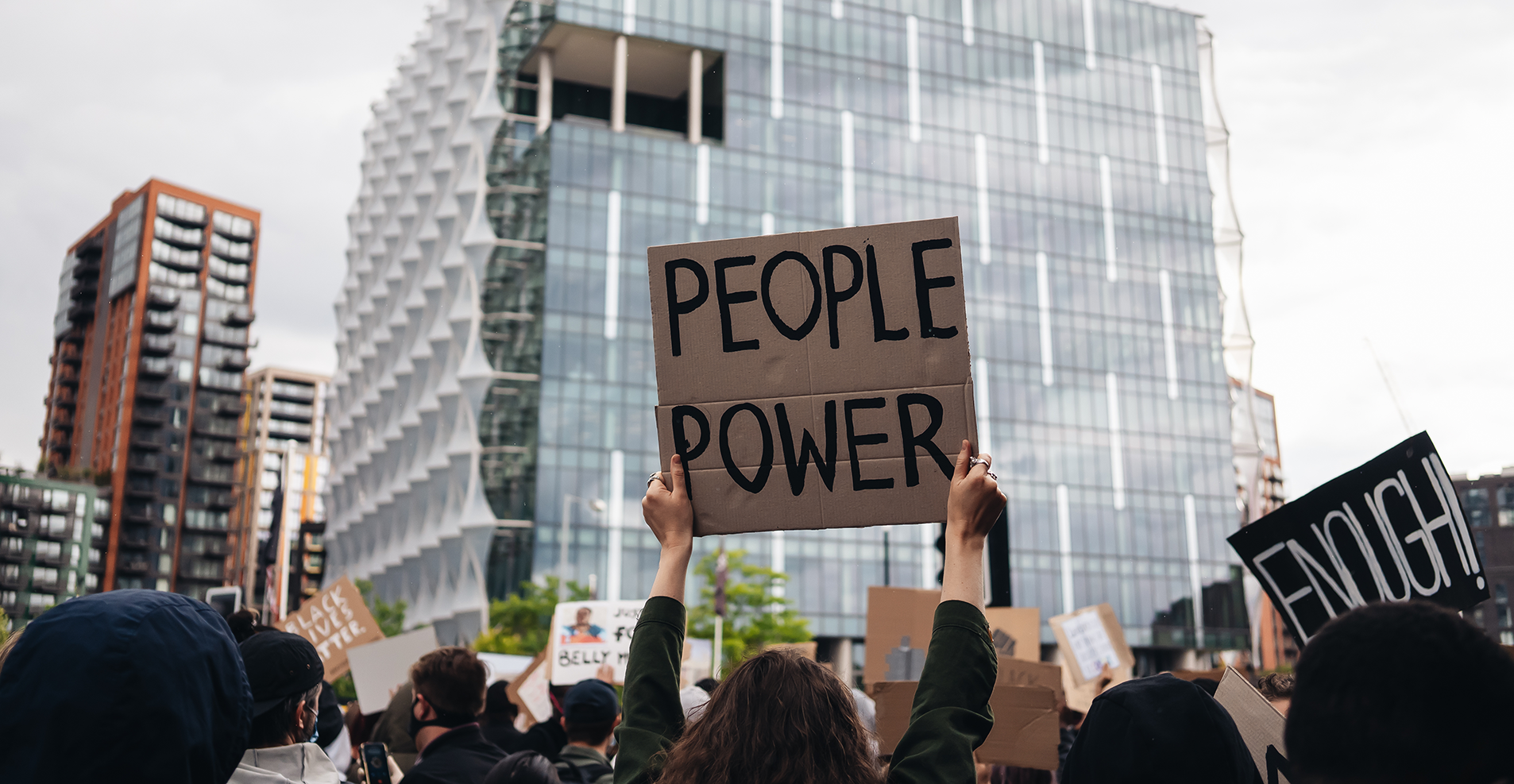
What we learnt from bringing the public together to talk about protest
As part of our mission at Demos to build a collaborative democracy, we are keen to practise what we preach and involve the public in developing our own policy visions. We think this can be particularly powerful on contentious issues such as protest, where you need to get beyond headline public opinion and reach considered public judgement.
In June, we did just that. We brought a representative sample of 24 members of the public together in a deliberative process – our People’s Town Square on protest, supported by Liberty. Over the course of four online sessions, participants heard balanced information on protest history, legislation and debates, and were given the time and space to deliberate on what role protest should play in society.
It’s a contentious topic so, yes, there were some heated moments. But 95% of our participants rated their experience positively in a follow-up survey. So what did we learn about doing participatory processes like this well?
- Recruit participants with a representative range of views
- Set out clear conversation guidelines to create a safe space for discussion
- Provide balanced information, but also recognise that this will always be contentious
Recruit participants with a representative range of views
When recruiting participants to discuss a contentious topic, aim to get as representative a sample as possible not only in terms of demographics, but also in terms of views on this topic. This ensures that your sample is diverse in life experiences, as well as perspectives on the particular topic you’re examining.
To achieve this, we conducted a nationally representative poll to benchmark experience of protest and overarching views on this topic within the population. We then used this data to determine our recruitment sample criteria, and therefore the participants that took part in the process.
Set out clear conversation guidelines to create a safe space for discussion
Outline conversation guidelines for the sessions from the outset, and keep coming back to them to remind participants what you expect of them. We used these to create a space where people felt comfortable sharing their honest thoughts and experiences, knowing that if others disagreed, they would do so constructively.
We started each session with a reminder of the conversation guidelines:
- Step forward, step back (i.e. if you tend to be more quiet, push yourself to step forward, whereas if you tend to be more loud, remind yourself to step back so that we can hear from everyone)
- Be present (although feel free to take breaks, and we recognise there may be instances where you need to step out)
- Disagree, agreeably (i.e. it’s fine to disagree, but do so respectfully and constructively)
- We will keep to time (and therefore may need to move the conversation on at times)
- Video on if possible (although we recognise there may be instances where this is not possible)
Part of creating a safe space was being prepared to take action when someone violated the conversation guidelines, as it put the experiences of others – both participants and facilitators – as well as the quality of the data at risk.
We also had a wellbeing and tech co-ordinator in every session to assist not only with any tech issues, but to also be there if anyone had wellbeing concerns to share, or needed to take a break and decompress if the conversation was getting heated, as it naturally did at times.
Provide balanced information, but also recognise that this will always be contentious
It is crucial that you present participants with balanced information on contentious topics so that they can make up their own minds. Think carefully about the information you will present, not only in terms of the content (e.g. showing different sides of the debate) but also the format (e.g. matching powerful video testimony on one side of the debate with something equally as powerful on the other).
However, recognise that it may be impossible to know if you have truly reached impartiality, if such a thing even exists. It depends on the lens you view it through, and so be conscious of that. Strive for balance, invite fresh eyes to provide new perspectives (especially those with independent expertise), but be aware that balance is in the eye of the beholder.
What about our participants?
The three learnings we have outlined are not just about getting the best data out of the process, but creating the best participant experience. The things participants told us they enjoyed most about the People’s Town Square were getting out of their echo chambers by speaking to people they otherwise wouldn’t have about protests, and learning new information about this topic. It’s up to us to ensure they can do so in a safe environment.
